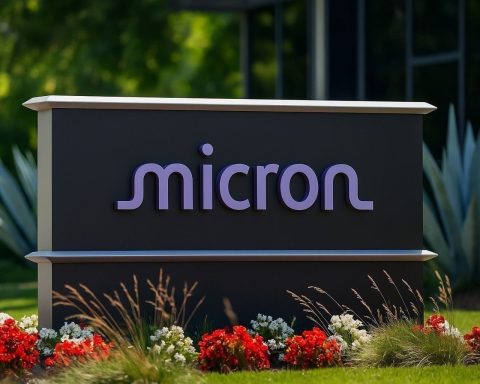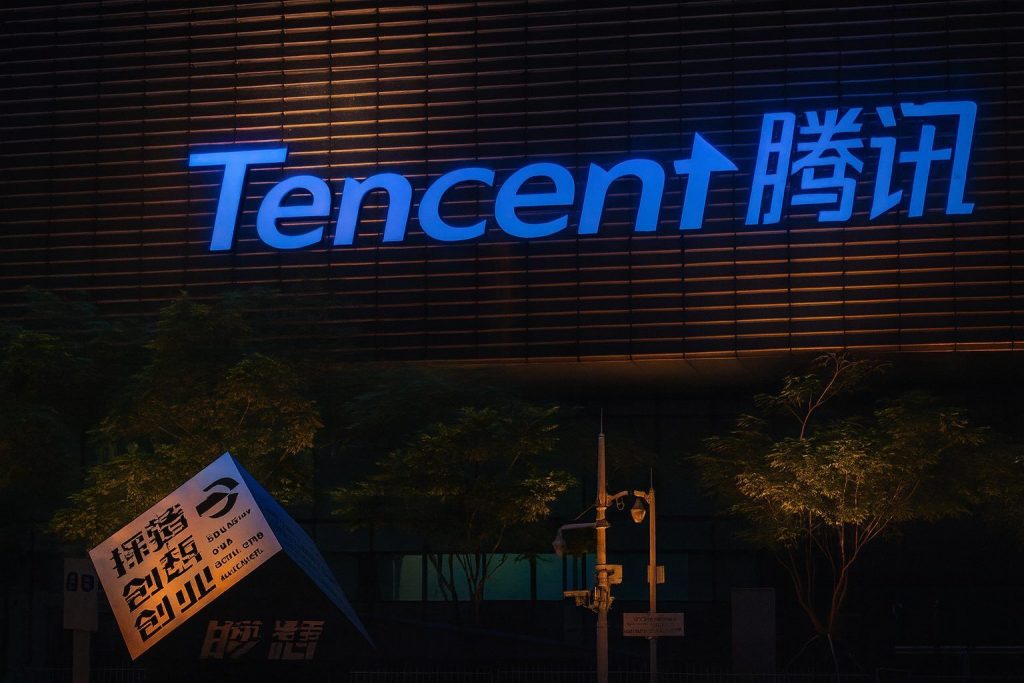Semiconductor Manufacturing International Corp. (SMIC, 0981.HK / 688981.SH) climbed on Thursday as Chinese chip stocks rallied on AI optimism and investors digested fresh warnings about a looming global memory-chip shortage.
SMIC stock price today: Hong Kong and Shanghai move higher
As of Thursday, 27 November 2025, SMIC shares are trading higher on both sides of the border:
- Hong Kong (0981.HK) – SMIC’s Hong Kong–listed stock traded around HK$70–71, up roughly 2–4% on the day. Historical data show a prior close of HK$68.85 and an intraday range of about HK$69.50 to HK$71.80, putting the share price near HK$70.2, about 2% higher on the session. [1]
- Shanghai STAR Market (688981.SH) – On the mainland, SMIC’s A-share was up about 2%, quoted around RMB 115 in morning trading, with turnover of roughly RMB 813 million and modest turnover ratio. [2]
The move comes after a volatile stretch for Chinese chip names. Earlier this week, reports that the US might allow Nvidia’s powerful H200 AI chip to be sold into China triggered sharp swings: SMIC’s Hong Kong shares fell more than 6% in early trade on Monday before paring losses to close about 1% lower, underscoring how sensitive the name remains to US–China tech headlines. [3]
Despite today’s bounce, SMIC stock is still well below its recent peak. Over the past 12 months, the shares have more than doubled, and they remain roughly 25% beneath their 52‑week high around HK$93.50, set in October 2025. [4]
Chip and AI rally: sector tailwinds boost SMIC
Hong Kong: chip names and tech index push higher
Chinese semiconductor stocks were among the stand-out gainers in Hong Kong on Thursday. The Hang Seng Index edged higher while the Hang Seng Tech Index added around 0.7–1%, helped by risk-on sentiment tied to expectations of a US Federal Reserve rate cut in the coming weeks. [5]
Within that move, SMIC was one of the key beneficiaries:
- The South China Morning Post reported that SMIC’s Hong Kong shares rose about 3.6% to HK$71.35 in morning trade, helping the market approach a two‑week high. [6]
- A separate note from Sina Finance highlighted an across‑the‑board surge in Hong Kong semiconductor names, with Hua Hong Semiconductor up more than 5% and SMIC climbing over 4%, as investors rotated back into hardware names tied to AI and domestic chip development. [7]
An additional factor: demand for “hard tech” exposure via ETFs. The Hong Kong Information Technology ETF (ticker 159131), which focuses specifically on Hong Kong chip and hardware stocks, gained more than 2% intraday and is marketed as a way to play what local brokers are calling a “Hong Kong chip supercycle.” SMIC is the largest holding in that ETF, with a weight of about 20%, making the stock a key driver of the fund’s performance. [8]
Mainland China: chip ETFs and A-share semis jump
On the mainland, AI- and chip-themed ETFs traded firmly higher:
- A popular chip ETF (159995) was up about 2.2% in early trade, with financial media noting strong gains in high‑performance computing and AI-related names. SMIC was cited among constituents rising nearly 2% as the broader A‑share semiconductor index advanced. [9]
- Another digital-economy ETF (159389) saw its unit count jump, with SMIC listed as its largest single holding, reflecting how heavily domestic institutional products are benchmarked to the foundry as a core “national champion” in chips. [10]
- Market commentary from Sina noted SMIC’s A-share gain of roughly 2.0%, supported by a modest net inflow of “main force” funds and active participation from large buy orders. [11]
Separately, Chinese financial media pointed out a broad-based uptick across semiconductor and AI hardware stocks in the A‑share market, as investors bet that 2025 marks the start of the next up‑cycle in global semiconductors, driven by AI data‑center build‑out and recovering smartphone demand. [12]
Fresh headlines today: memory-chip squeeze and SMIC’s warning
Global memory-chip shortage fears intensify
One of the most notable global tech stories on 27 November is a warning from PC and server makers about a looming memory-chip squeeze, with direct implications for foundries like SMIC.
A widely circulated report from Business Standard, citing Bloomberg, says companies such as Dell Technologies and HP are flagging potential shortages of DRAM and NAND that could run through 2026, as major suppliers prioritize more complex and profitable high‑bandwidth memory used in AI systems. [13]
In that same article, SMIC is explicitly mentioned:
- China’s top foundry has reportedly warned that tightening memory supply could constrain production of cars and consumer electronics in 2026, as device makers struggle to secure sufficient memory to pair with logic chips. [14]
The Straits Times also picked up the broader theme, noting that tech manufacturers from PCs to smartphones are stockpiling memory and bracing for higher costs as AI infrastructure build‑outs consume an outsized share of global DRAM and NAND output. [15]
For SMIC, the message is two‑sided:
- On one hand, a supply crunch could support pricing power for foundry customers making high‑value systems and encourage inventory builds that keep fab utilization high.
- On the other, SMIC’s own clients may delay or trim logic orders if they cannot source enough memory, potentially capping upside in certain chip categories.
Rumored Japan photoresist curbs revive supply-chain anxiety
Another widely discussed piece today comes from Asia Times, which explores social‑media rumors that Japanese suppliers could further tighten shipments of photoresist and related materials to China. While no formal ban has been announced, the article details concerns that slower approvals and more cautious servicing could disrupt fab operations. [16]
The report recalls a 2021 incident in which a Japanese supplier’s photoresist constraints allegedly caused SMIC’s fab efficiency to drop by about 20%, highlighting how heavily Chinese foundries still rely on Japan for high‑end lithography materials. [17]
For investors watching SMIC today, this serves as a reminder that:
- The company’s technological progress and capacity ramp‑up remain tightly linked to the availability of foreign materials; and
- Beijing is likely to accelerate funding for domestic photoresist and other upstream materials, which could open new local partnership opportunities for SMIC but also introduce short‑term qualification risk.
China’s semiconductor software push: SMIC as a flagship client
Beyond materials, software is another critical bottleneck in chip manufacturing — and new reporting today from Caixin Global shows how this landscape is starting to shift in China’s favor.
Caixin highlights Semi‑Tech Group, a domestic provider of computer‑integrated manufacturing (CIM) and manufacturing-execution-system (MES) software for fabs. According to the report, the company’s systems have been qualified in multiple 12‑inch fabs and now serve more than 750 clients, including industry heavyweights SMIC, Hua Hong and JCET. [18]
Historically, CIM/MES markets for chip plants have been dominated by US suppliers like Applied Materials and IBM, which together are said to account for over 80% of the global market. [19]
For SMIC, the growing maturity of domestic fab‑management software has several implications:
- Reduced reliance on US vendors at a time when export controls and licensing reviews remain a constant threat.
- Potential cost and customization advantages, as Chinese providers tailor tools to local fab workflows and nodes.
- A stronger ecosystem narrative for investors, reinforcing the idea that SMIC sits at the center of a rapidly “de‑risking” Chinese semiconductor supply chain.
Today’s narrative builds on strong Q3 results and cautious Q4 guidance
The market action on 27 November is happening against a backdrop of better‑than‑expected Q3 results and measured guidance that SMIC delivered earlier this month.
Q3 2025: profits and utilization beat forecasts
On 13 November, SMIC reported its third‑quarter 2025 earnings, showing:
- Revenue of about US$2.38 billion, up 9.7% year on year, modestly ahead of analyst expectations. [20]
- Net profit attributable to shareholders of roughly US$192 million, a ~29% year‑on‑year increase, beating consensus estimates compiled by LSEG. [21]
- Gross margin around 22%, up about 1.6 percentage points quarter on quarter, supported by higher utilization and product mix. [22]
- Capacity utilization near 96%, climbing more than 3 percentage points from the prior quarter. [23]
Futunn’s earnings commentary notes that SMIC’s 28nm ultra‑low‑power logic processes have entered mass production, image-sensor and ISP platforms continue to improve, and its embedded storage and specialty NOR/NAND platforms are expanding from consumer devices into automotive and industrial microcontroller applications. [24]
Taken together, these data points suggest that China’s domestic demand and “import substitution” programs are keeping SMIC’s fabs busy, even as advanced-node restrictions limit its access to cutting‑edge tools.
Q4 2025 guidance: growth slows, margins normalize
On the same day, SMIC issued Q4 2025 guidance, signaling a more measured near‑term outlook:
- Quarter‑on‑quarter revenue is expected to be flat to +2%, implying a modest sequential slowdown after Q3’s strong rebound. [25]
- Gross margin is guided to 18–20%, down from the ~22% reported in Q3, as product mix and pricing normalize and the company continues to invest in capacity and R&D. [26]
Several brokerages, including BOCI, have responded to the results and guidance by maintaining “Buy” ratings and raising target prices (for example, to around HK$83–90), arguing that SMIC remains a prime beneficiary of China’s push for chip self‑sufficiency despite export‑control headwinds. [27]
Valuation and volatility: where SMIC stands after today’s move
With today’s rally, SMIC’s Hong Kong share price sits around:
- Roughly HK$70–71,
- Well above its 52‑week low in the mid‑HK$20s, but
- Still about one quarter below its October high near HK$93.5. [28]
Over the last year, SMIC has delivered triple‑digit percentage gains, outperforming many broader China equity benchmarks as investors sought leveraged exposure to the country’s AI and semiconductor ambitions. [29]
At the same time, recent weeks have highlighted just how volatile the stock remains:
- Reports around US export‑control tweaks for Nvidia’s AI chips can move SMIC 5–10% in a single session, in both directions. [30]
- New rumors about Japanese materials, or evolving US, Taiwan and EU controls, can quickly reshape sentiment on China’s entire chip supply chain. [31]
For long‑term investors, the thesis increasingly revolves around whether:
- Domestic demand plus state support can offset limits on advanced Western tools;
- SMIC can execute on its expansion plans into 2026 and beyond while navigating margins back toward the low‑20s; and
- China’s parallel push in materials and software (photoresists, CIM/MES, EDA) meaningfully reduces geopolitical risk over the next few years. [32]
Key themes to watch after 27 November 2025
Looking beyond today’s bounce, several themes highlighted in the latest headlines are likely to guide how SMIC stock trades into year‑end:
- AI‑driven demand and the new memory cycle
Analysts and brokers tracking Hong Kong chip stocks argue that AI applications are driving a multi‑year up‑cycle in memory, with DDR5 and high‑bandwidth memory prices expected to rise well into next year. SMIC is repeatedly listed as a key concept stock leveraged to this theme through its logic and specialty memory platforms. [33] - Global memory shortage and downstream constraints
SMIC’s own warnings about potential memory shortages in 2026 suggest a risk that device makers may have to scale their production plans, which could flow back into foundry order books if not mitigated. [34] - Supply-chain resilience: photoresist and materials
Today’s discussion around Japanese photoresist highlights how materials bottlenecks can quickly hit fab efficiency. Any concrete policy steps from Tokyo — or new funding rounds from Beijing for domestic suppliers — will be closely watched for their impact on SMIC’s operational risk profile. [35] - Localization of fab software and tools
The Caixin report underlines that homegrown fab software is no longer a theoretical story; it is already deployed at scale in SMIC’s ecosystem. Further adoption of domestic CIM/MES and, eventually, design tools would be a medium‑term positive for the company’s strategic independence. [36] - Macro and policy backdrop
Thursday’s move also reflects improving sentiment on US rate cuts and global risk assets, which has helped Hong Kong tech names recover from recent AI‑valuation jitters. Continued macro volatility could remain a swing factor for SMIC’s daily moves even when company fundamentals are stable. [37]
References
1. www.investing.com, 2. finance.sina.com.cn, 3. www.asiafinancial.com, 4. markets.ft.com, 5. www.scmp.com, 6. www.scmp.com, 7. finance.sina.cn, 8. finance.sina.cn, 9. www.nbd.com.cn, 10. fund.10jqka.com.cn, 11. finance.sina.com.cn, 12. stcn.com, 13. www.business-standard.com, 14. www.business-standard.com, 15. www.straitstimes.com, 16. asiatimes.com, 17. asiatimes.com, 18. www.caixinglobal.com, 19. www.caixinglobal.com, 20. www.reuters.com, 21. www.reuters.com, 22. news.futunn.com, 23. news.futunn.com, 24. news.futunn.com, 25. news.futunn.com, 26. news.futunn.com, 27. www.etnet.com.hk, 28. markets.ft.com, 29. www.investing.com, 30. www.asiafinancial.com, 31. asiatimes.com, 32. www.caixinglobal.com, 33. news.futunn.com, 34. www.business-standard.com, 35. asiatimes.com, 36. www.caixinglobal.com, 37. www.scmp.com









